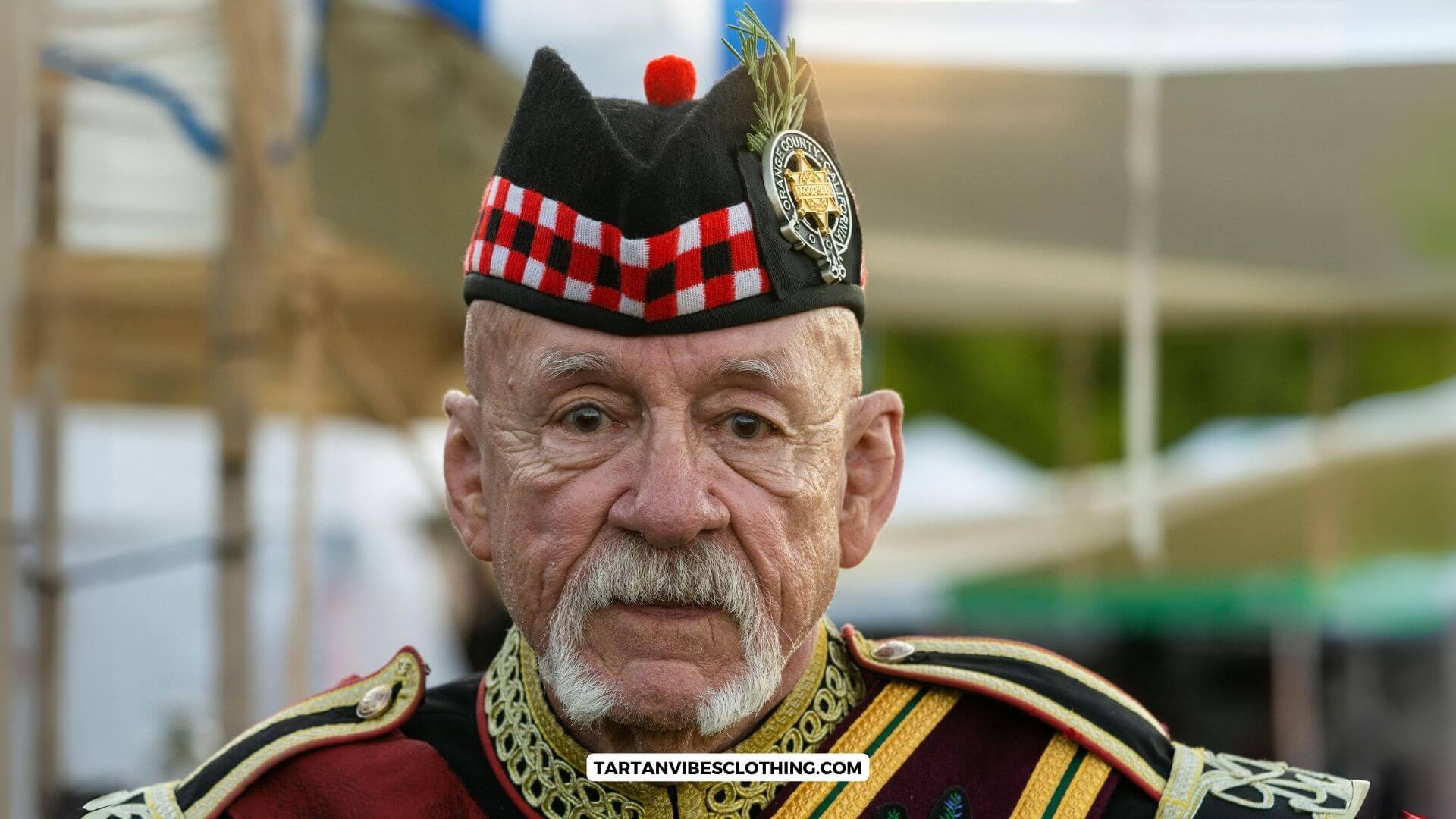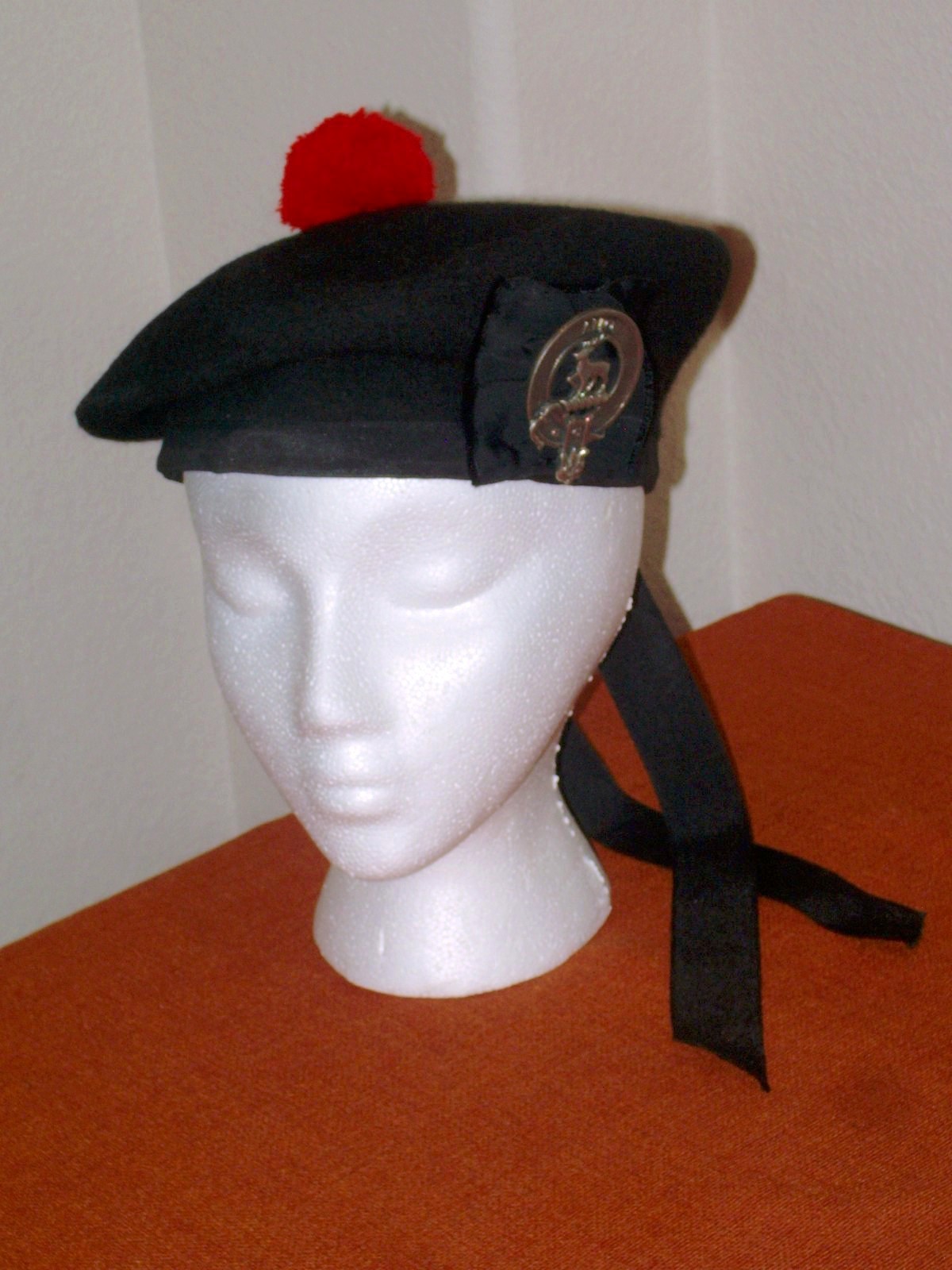Table of Content
Scotland is renowned for its rich cultural heritage, and one of the most iconic symbols of this heritage is the variety of traditional Scottish hats. These hats serve practical purposes and represent various aspects of Scottish identity, history, and artistry. This article will explore the different types of Scottish hats, their meanings, and how they fit into modern fashion.
I. Overview of Scottish Hats
1. The Origins of Scottish Hats
These Scottish hats are the most favored form of headgear in Scotland. The hat initially served as a military headpiece. It has long been linked to the Scottish regiments within the British Army and was also donned by some of the first settlers in North America. This style appeared in Northern England from the 14th century, when the term "bonnet" was commonly used. Before around 1700, "cap" replaced this term, except in Scotland where it continues to be called a bonnet in Scots.

The cap is an ancient type of headwear in Scotland, worn from the 15th to the 19th centuries. It gained popularity in the late 16th century as part of Scottish national attire and was associated with formal events like weddings and funerals.
2. Importance of Hats in Scottish Culture

For many centuries, hats have been an essential aspect of Scottish culture. They are commonly seen at various traditional occasions, including weddings, ceilidhs (a kind of social gathering with music and dancing), and Highland games, which celebrate Scottish heritage through athletic competitions. In addition to their cultural significance, hats serve practical purposes; they help keep people warm and shield them from Scotland's unpredictable and harsh weather conditions.
🔔Learn more about the Sporran, a distinctive accessory that embodies Scottish culture. Check out "What is a Sporran? A Unique Symbol of Scottish Heritage" for insights.
II. The Different Types of Scottish Hats
1. Tam O' Shanter
The tam o' shanter is a traditional Scottish wool bonnet that belongs to the category of Scottish hats for men. Renowned for its unique flat shape created through hand-knitting and felting. Originating in the 16th century, it was initially worn by men in Scotland. Featuring a woolen pom-pom or toorie on top, the phrase "tam o' shanter" gained popularity in the 19th century, especially within Scottish communities overseas, symbolizing Scottish heritage worldwide. The name comes from Tam o' Shanter, the main character in Robert Burns' poem from 1790.

Over the years, it has been produced in various materials and colors, with a female version referred to as a "tammy" or "tam." This distinctive style of Scottish hats for ladies is typically worn tilted to one side for a casual look. It complements different outfits, including kilts and informal clothing, making it appropriate for various occasions. Both men and women favor its distinctive round shape and wide brim.
2. Glengarry Bonnet
The Glengarry bonnet is a traditional Scottish Hat made from dense wool, featuring a toorie on top, often accompanied by a rosette cockade on the left and hanging ribbons at the back. It is typically worn as part of military and civilian Highland attire, serving as an alternative to the Balmoral bonnet or Tam o' Shanter. Traditionally associated with the Glengarry Fencibles, established in 1794 by Alexander Ranaldson MacDonell, the Glengarry bonnet may have originated from conventional military bonnets rather than being completely unique. The typical folding military Glengarry likely debuted in 1841 for the pipers of the 79th Foot.

By the 1850s, it became standard undress headgear for Scottish regiments in the British Army, displaying different diced bands, toories, and colors based on the regiment. The Glengarry was commonly worn until it was superseded by other military caps in the late 19th century, and its design influenced the Austrian cap and later British Army field service caps in the 20th century. Since the end of World War II, the correct way to wear the Glengarry has shifted. Before 1945, Glengarries were typically worn at a steep angle, with the right side low, often near the ear, while the side with the cap badge was positioned higher on the head. Since the war's end, the prevailing style is to wear the Glengarry cap on the head, placing the point straight above the right eye.
3. Balmoral Bonnet/Kilmarnock bonnet
The Balmoral bonnet is a traditional Scottish hat suitable for both formal and casual Highland attire. It evolved from the older blue bonnet, which has been around since at least the 16th century. The hat features a knitted, soft wool design with a flat top. The hat gets its name from Balmoral Castle, a royal residence in Scotland. The name "Balmoral" gained popularity in the late 1800s, and in 1903, Lowland regiments briefly used a stiffened version of the bluebonnet. After World War II, the Black Watch adopted a soft blue Balmoral, but in 2006, it was replaced by the Glengarry for all Scottish regiments. Despite this, the Balmoral remains favored in the Army Cadet Force and is also worn by musician Richard Thompson during performances.

It serves as an alternative to the similarly styled (informal) Tam o' Shanter cap and the (formal or informal) Glengarry bonnet. Once characterized by a large crown, the modern bonnet is more minor, crafted from finer material, and is generally dark blue, black, or Lovat green. Ribbons attached to the back of the band initially meant to secure the bonnet, are sometimes left hanging down. A regimental or clan badge is placed on the left side, attached to a silk or grosgrain ribbon cockade (usually in black, white, or red), with the bonnet typically tilted to the right to showcase this emblem. The top of the crown is adorned with a traditional red toorie, and some styles feature a diced band (commonly in red and white check) around the bottom edge.
4. Scottish Flat Cap
The Scottish flat cap, known as the "newsboy cap," is a trendy and casual choice that has become more popular recently. It can be crafted from various materials, such as traditional tartan, suede, fleece, and other adaptable fabrics. However, tweed is the most common material used for these caps. They offer warmth and are suitable for both men and women, making them a flexible option.

A toorie is unnecessary on this hat. The flat cap stands out among traditional Scottish hats because it lacks a hatband and features a brim. Constructed from a single piece of fabric leading into the bill, the flat cap has a structure that combines style and practicality. It can enhance a casual outfit or introduce a touch of elegance to formal wear. You can match it with a blazer for a polished appearance or wear it with jeans for a laid-back look.
III. Choosing the Right Scottish Hats for Your Occasion
1. Formal Events
When attending formal events such as weddings or Highland Games, it's a good idea to choose classic headwear options like the Balmoral or Glengarry hat. These types of hats complement formal Scottish clothing beautifully and demonstrate your respect and admiration for Scottish heritage and traditions.

2. Casual Outings
The Tam O'Shanter or flat cap is an ideal option for casual events. These hats provide comfort and a stylish look, making them suitable for everyday wear and social gatherings since they effortlessly combine style and ease. Their construction ensures a comfortable fit while complementing your appearance, making them adaptable for daily use and different social settings.

IV. How to Style Your Outfit with Scottish Hats
When it comes to styling Scottish hats, knowing how to wear a Scottish hat is essential to blend tradition with your unique style. These hats can serve as a distinctive accessory, enhancing your appearance whether you are preparing for an elegant occasion or simply enjoying a relaxed day outside.
1. Pairing Hats with Traditional Scottish Attire
Combining your hat with a kilt, a tartan sash, or other forms of traditional attire significantly improves your overall appearance. These stylish pairings are frequently observed at various events such as weddings, festivals, and other cultural celebrations. The blend of these elements not only showcases a rich heritage but also adds a distinct flair to your outfit, making it appropriate for special occasions where tradition is celebrated.

2. Modern Fashion Tips for Scottish Hats Enthusiasts
To give your outfit a modern flair, consider pairing a traditional Scottish hats with contemporary attire such as denim jeans, tailored blazers, or relaxed casual dresses. This combination of traditional elements and modern fashion results in a unique and fashionable look that stands out from the crowd.

V. Where to Buy Scottish Hats
If you are in search of Scottish hats, a fantastic initial approach would be to check out local accessory boutiques or specialty shops that focus specifically on Scottish-themed products. These types of stores often have authentic Scottish items, including an assortment of hats that showcase the true heritage of Scotland.
Besides visiting physical stores, you can also take advantage of online shopping options such as the Tartan Vibes Clothing website. There, you'll find a wide range of products sourced from Scotland, which not only include accessories like hats but also home decor and traditional apparel that reflect Scotland's rich cultural background.
Furthermore, it would be beneficial to participate in Scottish cultural events or festivals happening in your community. On these occasions, various vendors typically present a selection of traditional Scottish goods, offering you the opportunity not only to purchase Scottish hats but also to fully enjoy and engage with the lively cultural atmosphere.
Conclusion
Scottish hats are more than just accessories; they embody a rich cultural heritage. Each style tells its story, from the iconic Tam O'Shanter to the sophisticated Balmoral hat. Whether you're dressing up for a special occasion or want to embrace Scottish culture in your everyday wear, understanding the various types of Scottish hats will help you make an informed choice. Explore these styles and find the perfect hat that resonates with your personality and complements your wardrobe. Embrace the tradition, and wear your Scottish hat with pride!
Frequently Asked Questions
What is the most popular hat in Scotland?
Balmoral
The Balmoral is the most popular variety, recognized as a high-crowned hat adorned with a toorie. These classic Scottish caps are typically worn with formal attire, although many enjoy wearing them casually as well. They are crafted from heavy wool and feature a rigid brim.
What is the national hat of Scotland?
A tam o' shanter, commonly referred to as ToS in the British military, is a traditional Scottish hat typically worn by men. The term originates from the character Tam o' Shanter, who is the central figure in Robert Burns' poem from 1790. These hats are often made of tartan fabric.
What hats do men wear in Scotland?
It might include a toorie, which is the proper name for the "pom-pom" on top. Balmorals, along with a similar headwear known as a Tam o'Shanter, are typically worn as part of field attire by Scottish and Commonwealth military personnel. Additionally, it is frequently paired with a feather and a badge representing the clan crest.
What is a Scottish hat called?
The 'Scottish Bonnet' dates back to the 16th century. Over time, it has developed into various forms, such as the Balmoral bonnet, Glengarry hat (used mainly by military and pipe bands), and the Tam O' Shanter (often referred to as Tam).







